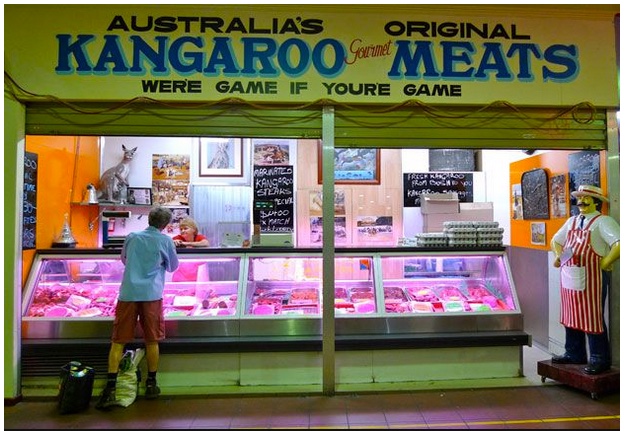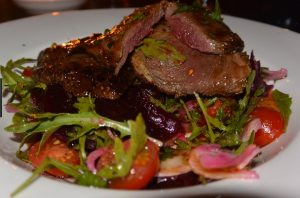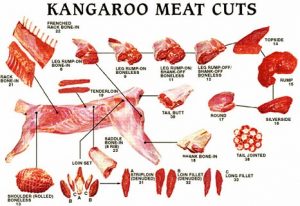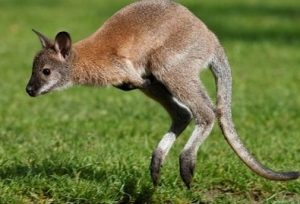
Kangaroo meat is nutritious but Australians don’t like it because it’s their national animal.
Kangaroo meat is so good it makes one wonder why the Aussies ever imported beef.

Kangaroo meat likes slow cooking and added fat
If you follow the Paleo lifestyle, as this writer has for some 12 years, Kangaroo meat is just about perfect: High quality protein, 2% fat, the best known animal source of Conjugated Linoleic Acid (helps you take off body fat) as well as high in iron and zinc. It does us modern cavemen proud. Kangaroos used for food are free-ranging and don’t contribute to greenhouse gasses. Even some vegetarians are eating kangaroo meat under an ethical view called Kangatarianism. I just call it tasty. How do you get it? You can order Kangaroo from several companies that will ship it to you packed in dry ice. Or, in larger cities you can find it in local markets and restaurants. Like other meats you can get various cuts and forms, medalions to ground. As a lean meat it does not over cook well and benefits from added fat in various dishes (as does horse meat.)
This account is from a 1948 expedition to Arnhem Land, a remote part of the northern Australia the size of Ireland set aside for Aboriginals who want to persue the hunter/gatherer lifestyle. It’s how to cook and eat a wallaby indigenous style.
“A large fire was made in a depression in the sand, and stones and shells were heated. Small green branches were placed on top of the stones and the wallaby was flung on these. After 5-10 minutes it was taken off the fire, placed on a layer of green leaves, and the singed fur was removed with a tomahawk. [Just the fur, not the skin.] Although the women sometimes did this preliminary treatment, a man always did the subsequent cutting up, which was done with a metal spear blade.

Kangaroo provides a variety of cuts for cooking.
The first cut was made horizontally on the ventral [belly] surface at the level of the anus, and next on the dorsal [back] surface along both sides to sever the leg muscles. Another cut was then made from the anus to the neck. The viscera were pulled out; and the kidneys, liver, heart and lungs, and the omental and mesenteric fat [the fat surrounding the intestines] were separated from the rest, and cooked on the hot stones and coals for 5 minutes. The cooked lungs were used to soak up the blood inside the carcass and then eaten. The offal was regarded as a delicacy by everybody and a certain amount of squabbling always followed its distribution.
The tail was cut off, and during the cooking was put on or alongside the body. The carcass was laid flat, dorsal side downwards, on the hot stones and ashes and the body cavity was filled with hot stones. Sheets of paperbark formed a cover over the animal, and sand was scooped out to make an oven. Wallabies weighing 15-20 pounds were cooked for 25-35 minutes. Everything edible was eaten except the stomach and intestines. The skull was cracked open to get the brain, and the bones were broken to extract the marrow.”

Wallabies are edible, too.
Kangaroos themselves are something of a problem in Australia. There were 27 million in 2010. By 2016 that number was 45 million. Blame rainy conditions that produce a lot of kangaroo food thus a lot of kangaroo babies. It seems to be a case of either humans start eating them or the kangaroos are going to starve to death by the millions. It’s a hard choice for many Aussies who think of “Skippy The Kangaroo” as many Americans think of “Bambi” a non-edible edible. By the way, as a meat animal kangaroos are very environmentally friendly… unless you have a few million carcasses lying around…

